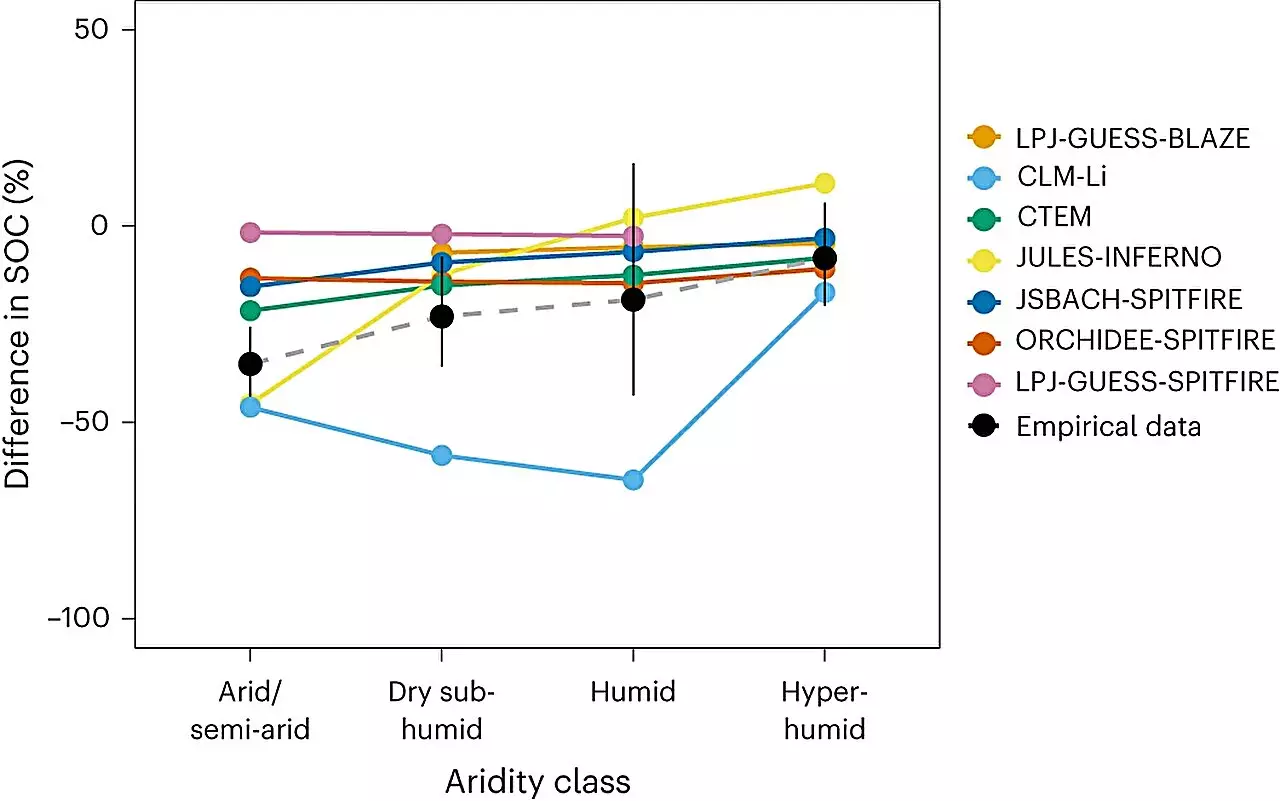Savannas and grasslands in drier climates have traditionally been overlooked in their contribution to climate change. However, a recent study published in Nature Climate Change has shed new light on their importance in storing heat-trapping carbon and mitigating climate warming. The study, conducted by a team of researchers from various institutions worldwide, including the University of Michigan, examines the impact of fire on carbon storage in topsoil across different ecosystems.
Contrary to previous beliefs, the study finds that savannas and grasslands in drier regions store significantly more carbon than previously thought. By reanalyzing datasets from 53 long-term fire-manipulation experiments and conducting field-sampling campaigns at six sites, the researchers discovered that fire frequency plays a crucial role in altering carbon storage in topsoil. Dry ecosystems are more susceptible to changes in wildfire frequency compared to their humid counterparts. The study’s lead author, Adam Pellegrini, emphasizes the vulnerability of carbon loss in dry regions with high fire frequencies while also highlighting their potential for carbon storage when fires are less frequent.
Over the past two decades, the expansion of human populations and the introduction of roads, croplands, and pastures have led to fire suppression and landscape fragmentation, resulting in smaller wildfires and reduced burned areas in drier savannas and grasslands. Surprisingly, this reduction in fire size and frequency has caused an estimated 23% increase in stored topsoil carbon in dryland savannas. Most state-of-the-art ecosystem models used by climate researchers failed to anticipate this increase, leading to an underestimation of the climate-buffering effects of dryland savannas, as pointed out by Peter Reich, a forest ecologist and study co-author.
The study’s findings indicate that savanna-grassland regions worldwide have gained a staggering 640 million metric tons of carbon in their soils over the past two decades. While declining fire frequencies have contributed to this extensive carbon sink in drylands, more humid savanna-grassland regions have experienced more frequent wildfires and increased burned areas, resulting in a 25% loss in soil carbon over the same period. The net change, however, remains positive, with an estimated gain of 0.64 petagrams (640 million metric tons) of soil carbon.
While the increase in soil carbon may not seem significant in relation to anthropogenic emissions, it highlights the potential of savannas and grasslands in mitigating climate warming. The study’s lead author, Adam Pellegrini, emphasizes that these ecosystems have slowed climate warming over the past two decades, despite fires. However, he also cautions that this trend is not guaranteed to continue in the future.
The new study challenges previous assumptions about the role of savannas and grasslands in climate change. By shedding light on their significant carbon storage capacity, particularly in drier regions, it emphasizes the importance of considering these ecosystems in climate models and mitigation strategies. Savannas and grasslands have the potential to function as valuable carbon sinks, offering a natural solution to address climate change. However, further research is needed to fully understand their resilience and susceptibility to future changes.


Leave a Reply